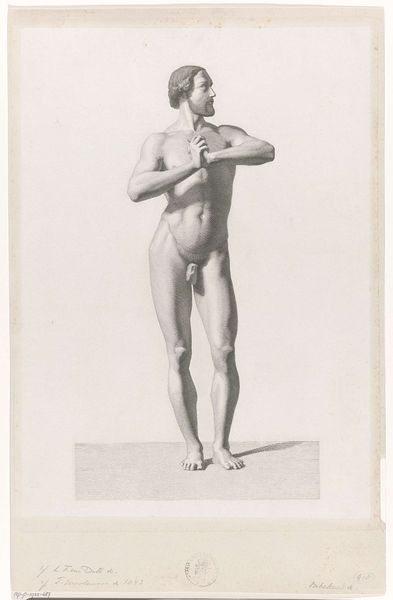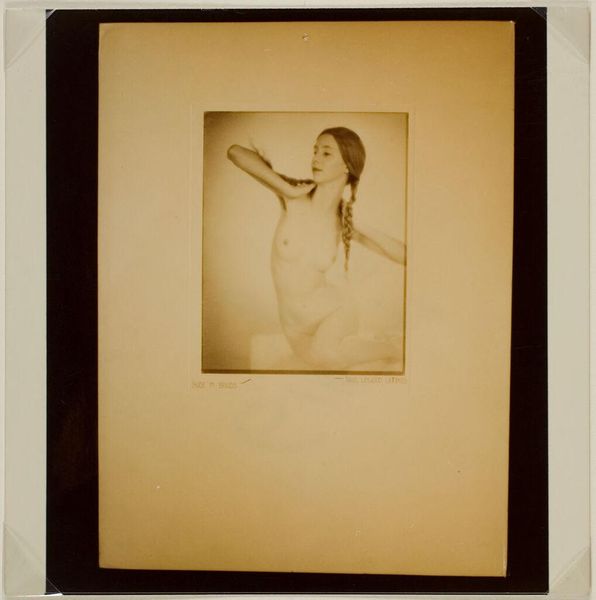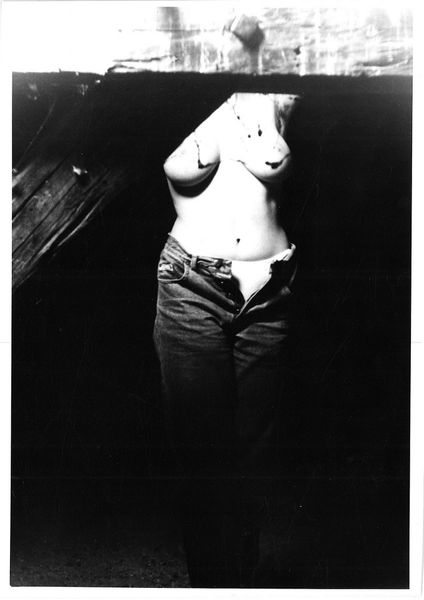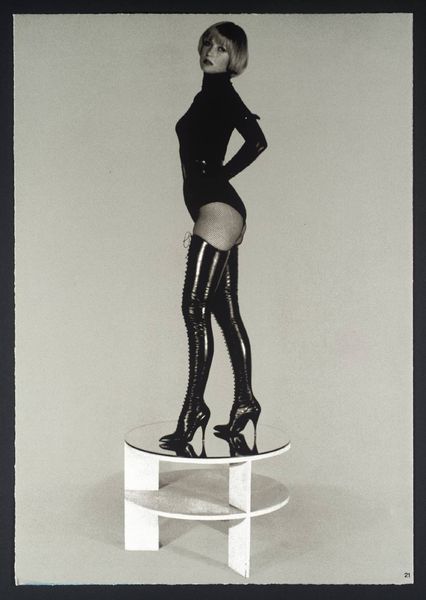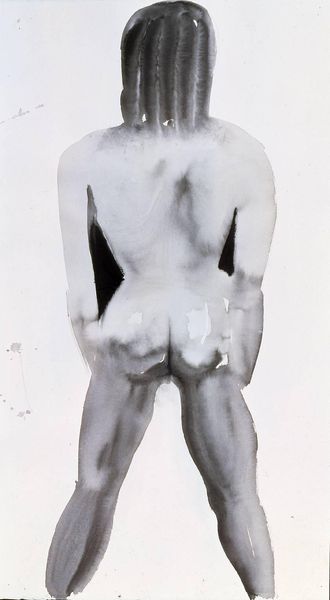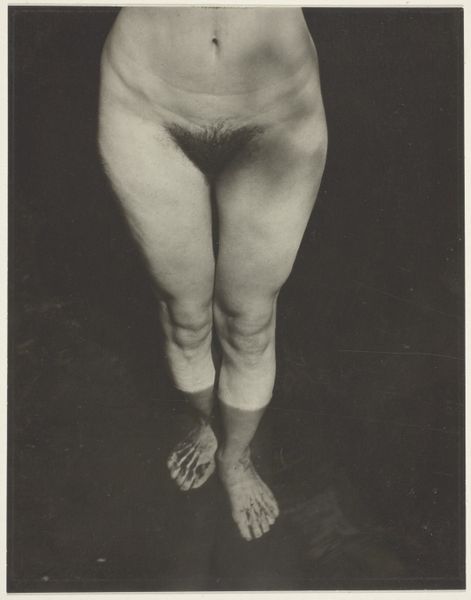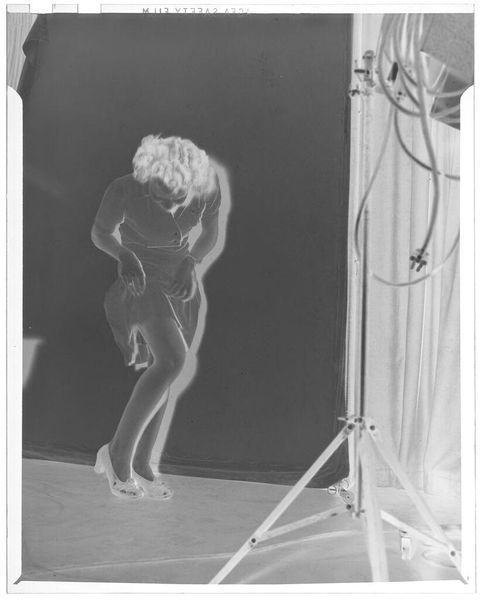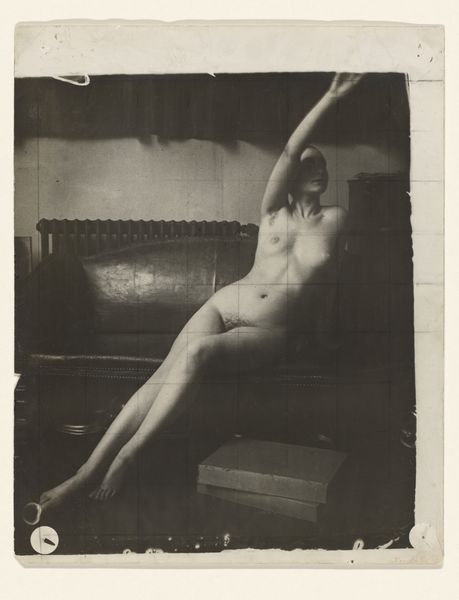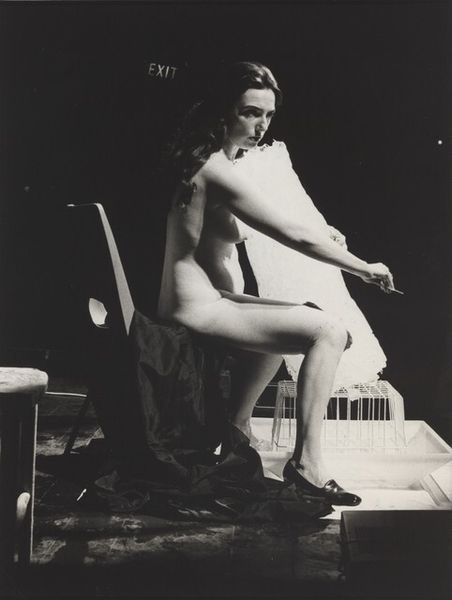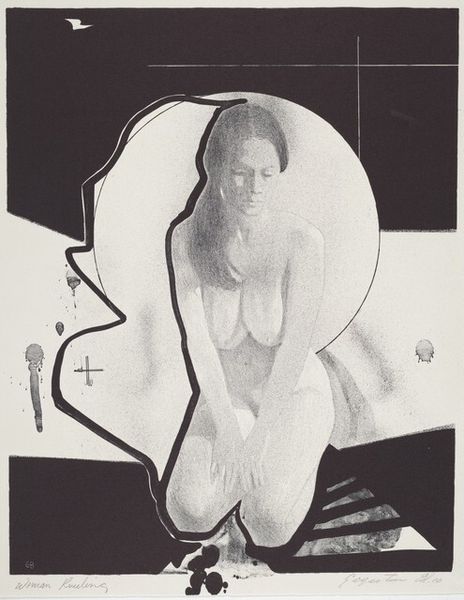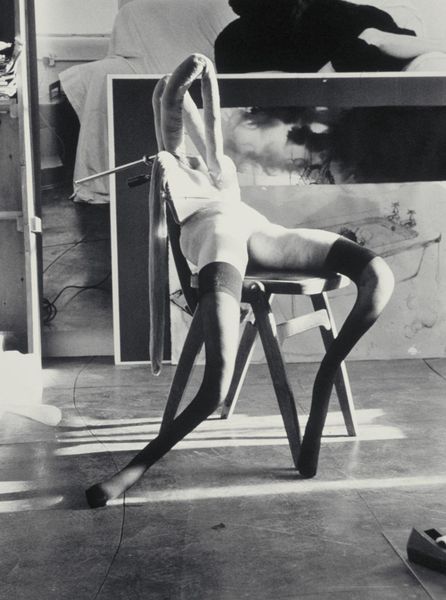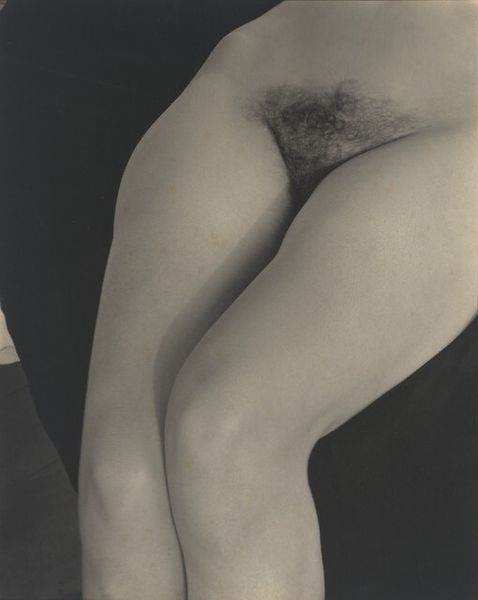![[no title] by Richard Deacon](/_next/image?url=https%3A%2F%2Fd2w8kbdekdi1gv.cloudfront.net%2FeyJidWNrZXQiOiAiYXJ0ZXJhLWltYWdlcy1idWNrZXQiLCAia2V5IjogImFydHdvcmtzLzlmNTM5YzY3LTU0YmYtNDFhZC04NDVjLTJkNjE0OGRkYWViZS85ZjUzOWM2Ny01NGJmLTQxYWQtODQ1Yy0yZDYxNDhkZGFlYmVfZnVsbC5qcGciLCAiZWRpdHMiOiB7InJlc2l6ZSI6IHsid2lkdGgiOiAxOTIwLCAiaGVpZ2h0IjogMTkyMCwgImZpdCI6ICJpbnNpZGUifX19&w=3840&q=75)
Dimensions: image: 892 x 600 mm
Copyright: © Richard Deacon | CC-BY-NC-ND 4.0 DEED, Photo: Tate
Editor: This untitled work by Richard Deacon in the Tate collection presents a surreal black and white photograph, evoking a sense of industrial mystery. What cultural narratives do you see embedded in this image? Curator: The photograph pulses with echoes of biomorphic forms and the industrial uncanny. Consider the palimpsest of cultural memory at play here: the fluid, organic shape juxtaposed with the rigid geometry of the mechanical. Editor: It is quite unsettling, and I am struggling to connect it. What is the significance of that form at the lower left? Curator: It acts as a glyph, a key almost. Its presence alongside the larger form hints at the artist's vocabulary of shapes. Doesn't it invite you to reconsider our relationship with technology? A relationship evolving constantly, yet rooted in human forms. Editor: I see that now. This image prompts me to rethink the familiar and find the body in the machine. Curator: Exactly! Visual symbols always carry complex meanings, so it is helpful to think about the larger historical implications.
Comments
Join the conversation
Join millions of artists and users on Artera today and experience the ultimate creative platform.
tate 6 months ago
⋮
This portfolio contains twelve black-and-white screenprints, none of which has an individual title. Each print brings together a photograph, selected from Deacon's own extensive photographic archive, and a smaller ink drawing. Deacon's personal archive contains both clippings of found images and his own photographs. He loosely categorises them under a number of headings in order to identify and delineate certain unintended repetitions in his choice of subject matter. By choosing one of his own images from most of these groupings, Deacon arrived at this selection of twelve photographs. The earliest photograph dates from 1988, the most recent from 1996. The photographs are grainy, atmospheric images of either natural forms, such as trees and rock formations, or of the interaction between the natural and manmade environment, such as an industrial pipe encased in a thick layer of ice, or a wooden statue worn by the elements. The ink drawings were produced, independently of the photographs, during an intense period of work in the Summer of 1996. They have been superimposed over the photographs as a kind of 'stamp' in either the lower left- or right-hand corner. Deacon has then produced a silkscreen print of the combined elements in order to create an image in which both the photograph and drawing form part of the same continuous surface. The drawings are simple and diagrammatic in nature, highly suggestive of organic form. Deacon has commented in unpublished writings that 'the process of matching drawing to photograph was intuitive but in each case there is a reciprocal relation of some sort between the two'. For the viewer, the connections between photograph and drawing remain largely ambiguous. However, in many of the images one can identify visual counterpoints that link the two. For example, the wooden statue of a saint carrying a lamb and the bible is juxtaposed with a drawing of interlocking biomorphic forms. The wavy contours of Deacon's line drawing echo those of the lamb's curly fleece and establishes a visual connection between the two. According to Charles Booth-Clibborn, the publisher of this portfolio, these images literally 'show and tell' how Deacon has used photographs of natural forms as sources for his sculptures. Many of the drawings certainly recall the open linear structures of his work in laminated wood, such as For Those Who Have Ears #2, 1983 (Tate T03958). Some, like the drawing that accompanies the wooden statue, evoke more 'solid' sculptures such as Struck Dumb, 1988 (Tate T05558). The series was printed at Coriander Press in London, and was published by Charles Booth-Clibborn under his imprint The Paragon Press. It exists in an edition of thirty-five, of which Tate's set in number thirty-three. Further reading:Jon Thompson, Pier Luigi Tazzi and Peter Schjeldahl, Richard Deacon, London 1995.Patrick Elliott (ed.), Contemporary Art in Print, London 2001, pp.36-45, reproduced pp.37-45.Jeremy Lewison, 'Contemporary British Art in Print?' in Patrick Elliott (ed.), Contemporary Art in Print, London 2001, p.18. Helen DelaneyNovember 2001
